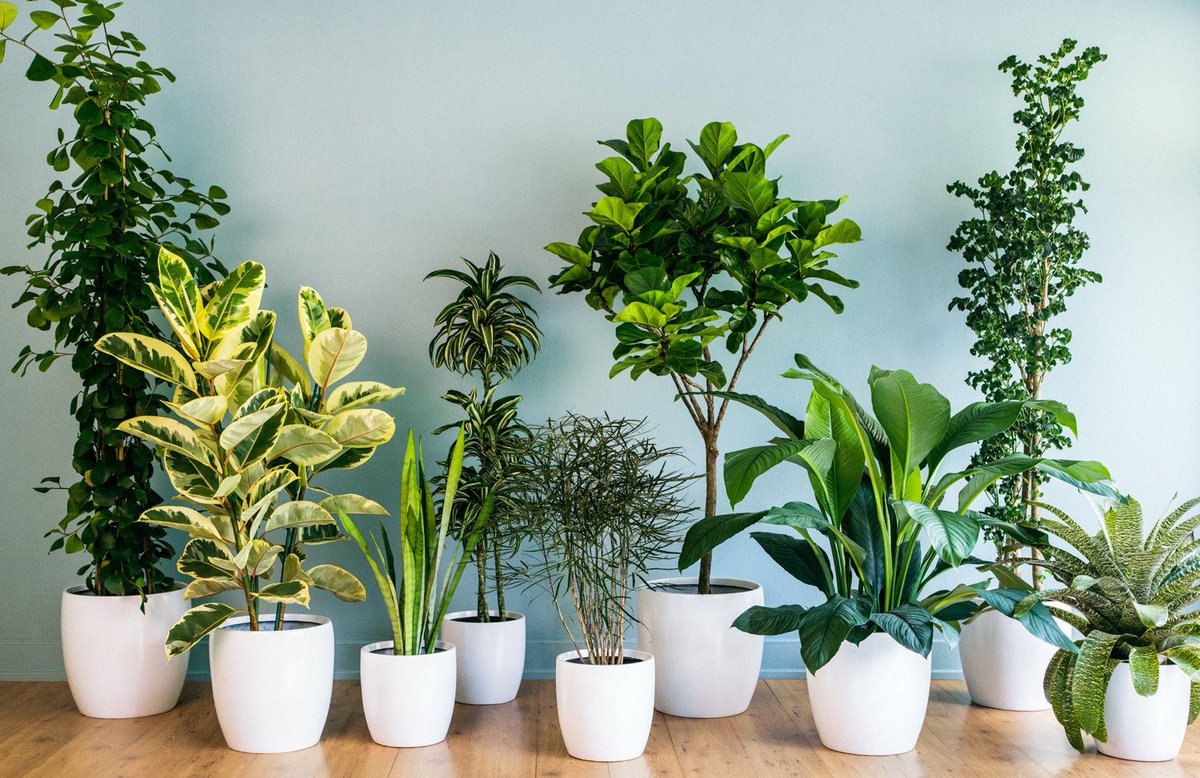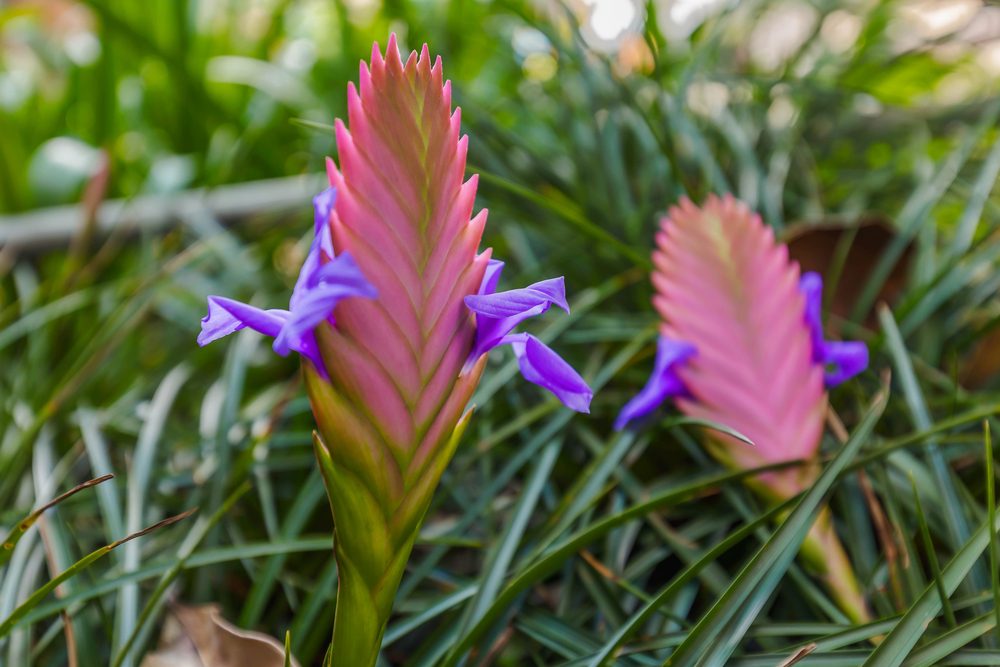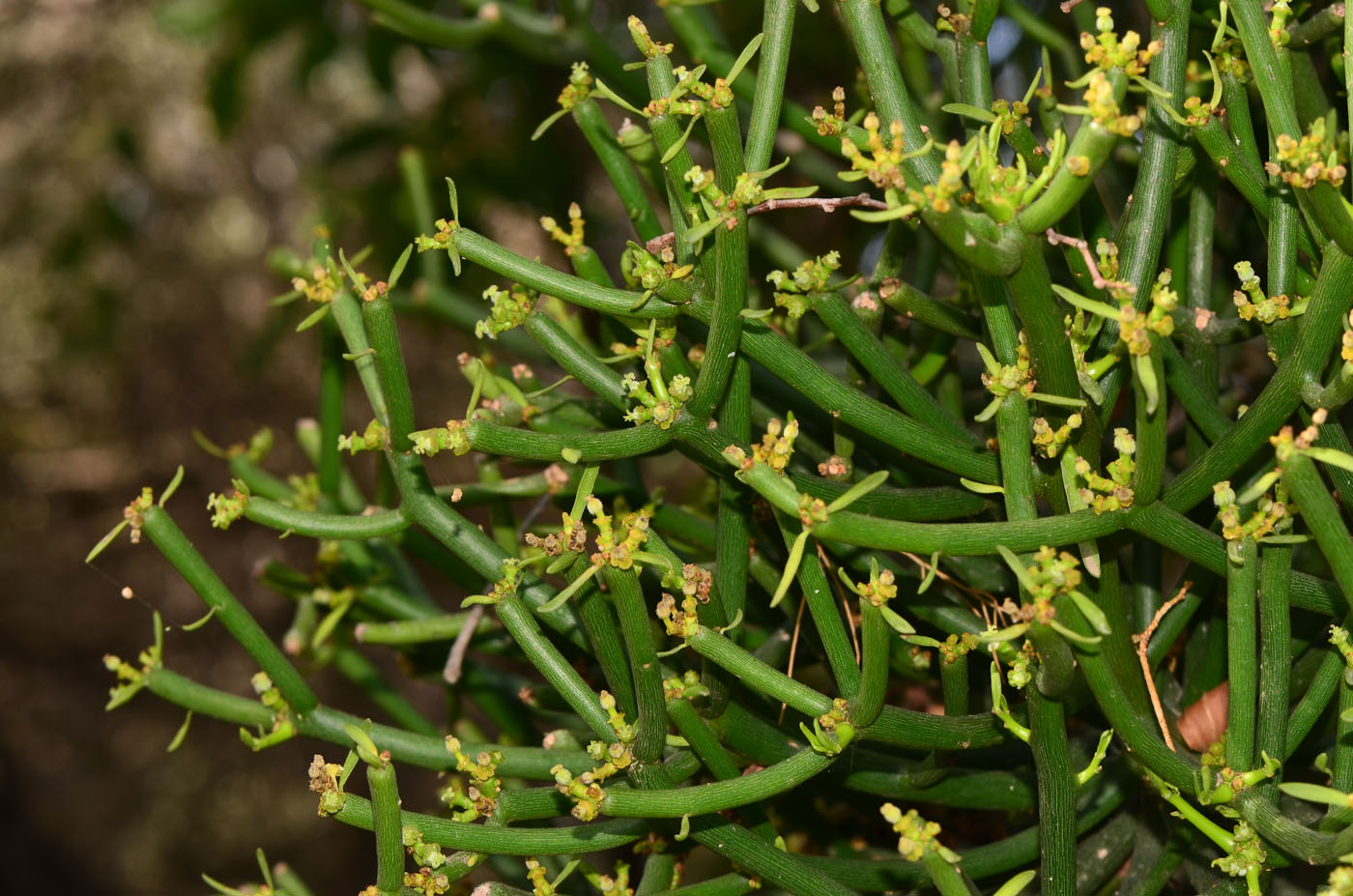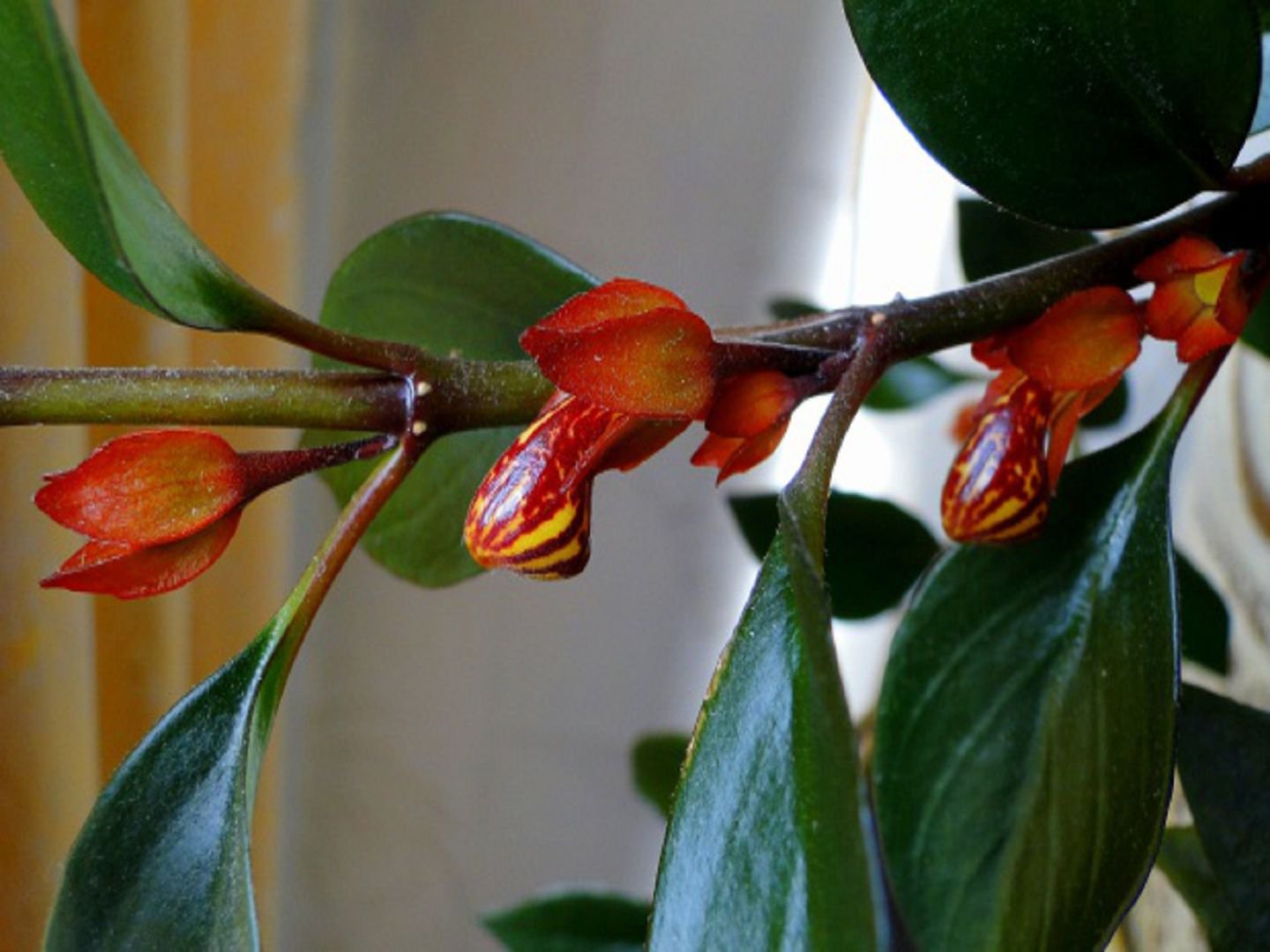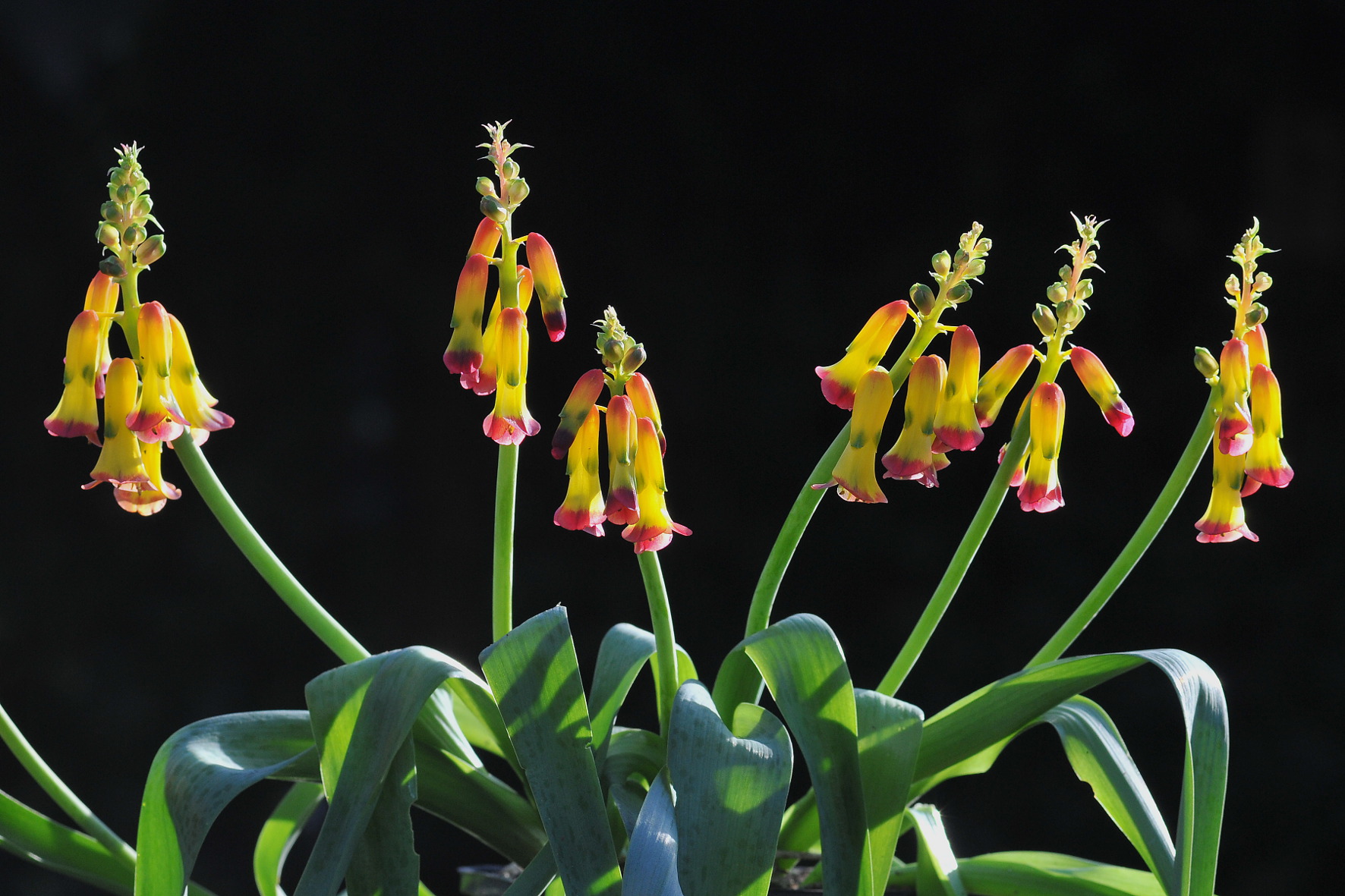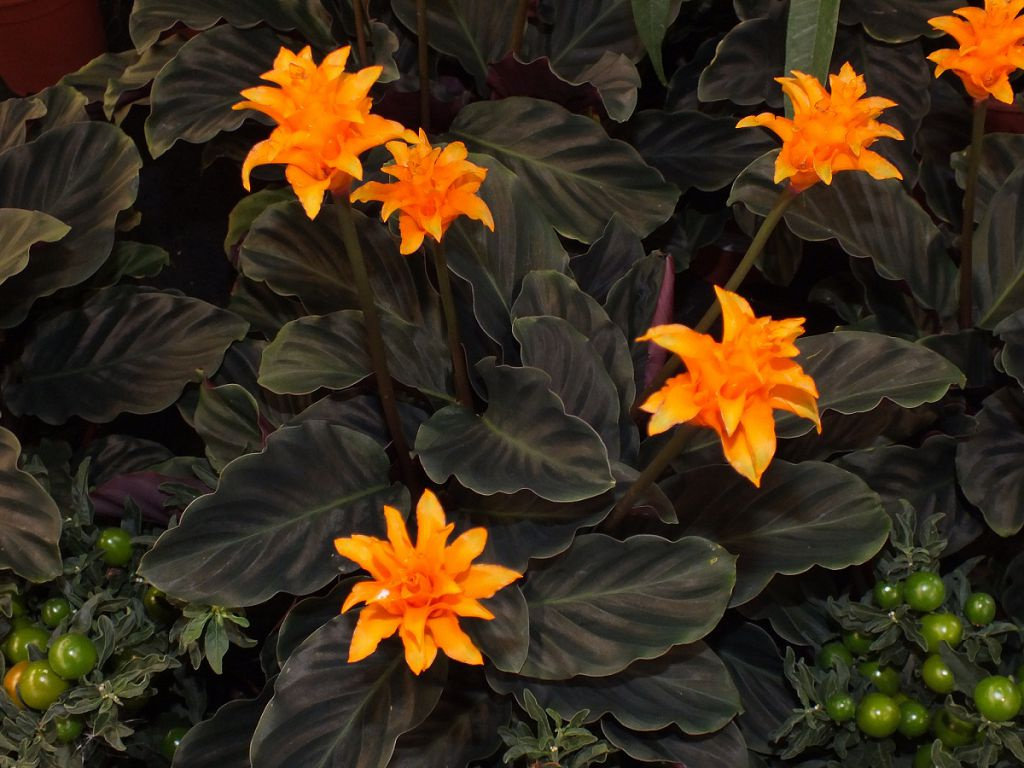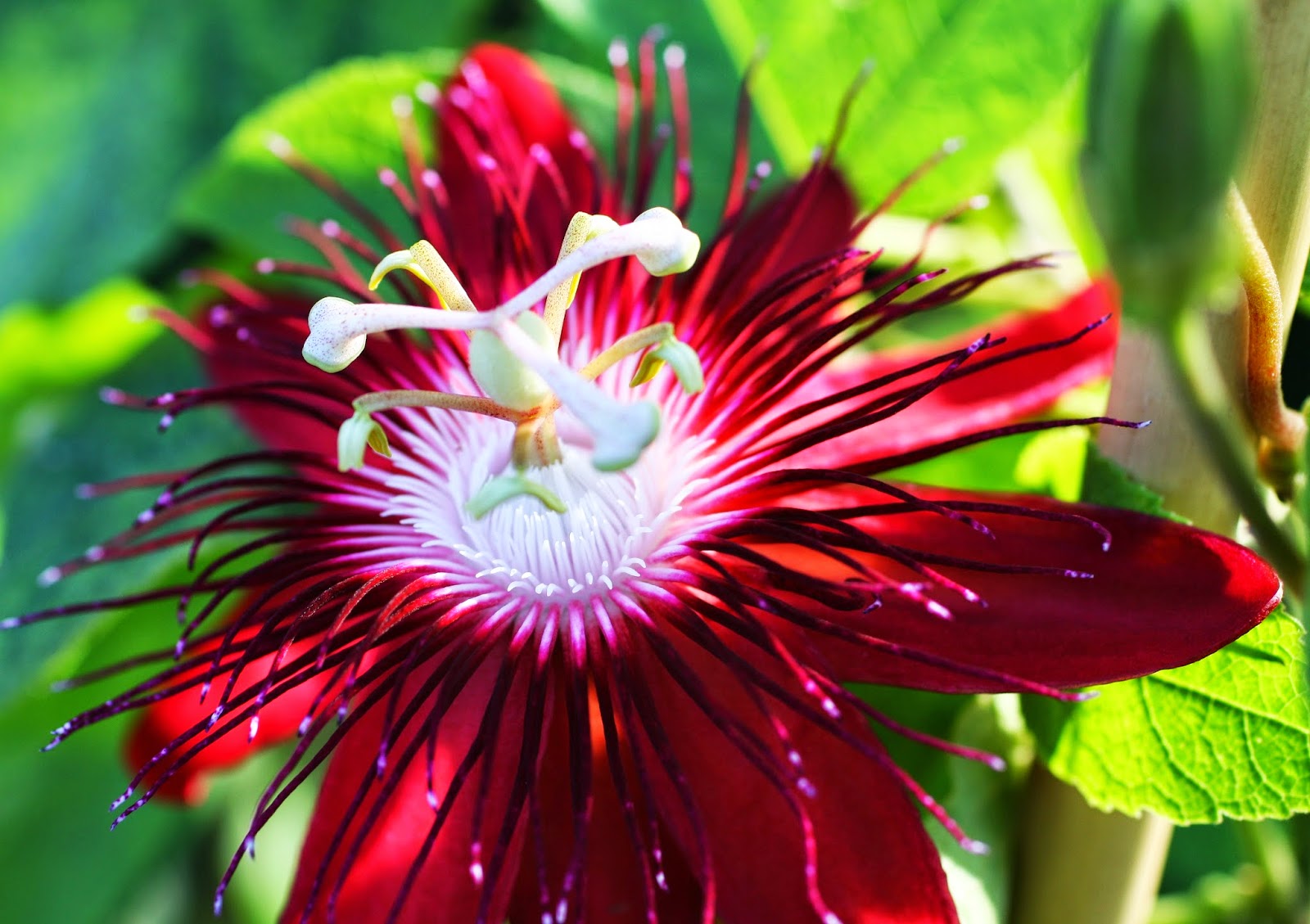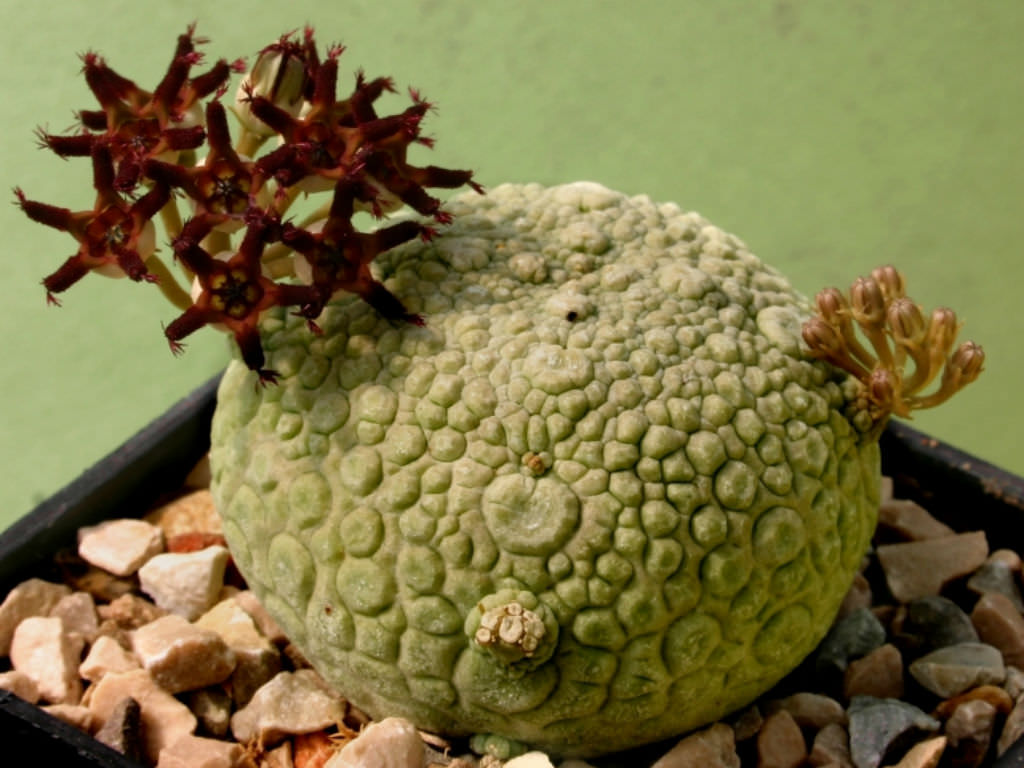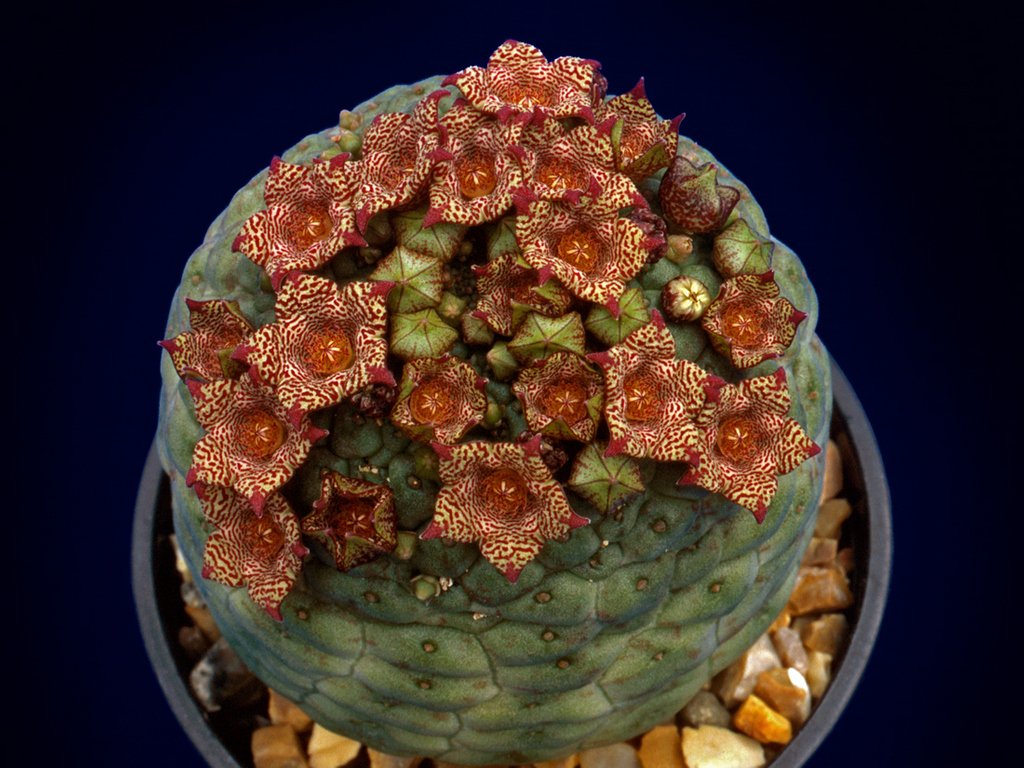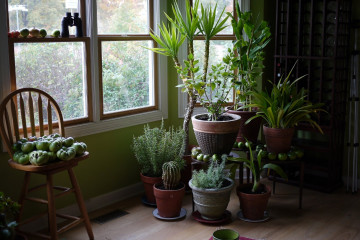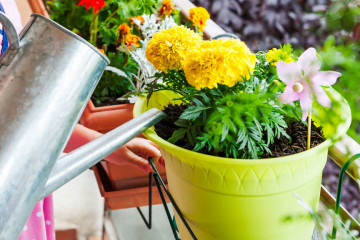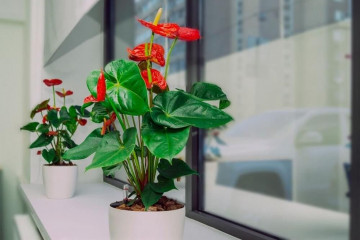Unusual indoor plants and tropical flowers
It is difficult to find an apartment that does not have indoor plants. And if most of the green inhabitants of window sills are easy to recognize, then there are some among them, whose name cannot be guessed right away. It is worth considering unusual exotic plants from the tropics and other rare indoor flowers.
Unusual indoor plants
The list of unusual cultures is quite large. Exotic home flowers are some of the most interesting and beautiful.
Tillandsia blue (Tillandsia cyanea)
The name of the plant is not easy. Caring for him will not be required at all by an ordinary one. Tillandsia is included in the Bromeliad family, and another name for the culture is "tropical star".
The homeland of the flower is the tropics. Needs warm temperature all year round. In summer, the room should be 25-28 ° C above zero, and in winter at least 18-20 ° C.
Ordinary garden soil is not suitable for an exotic indoor plant. Special land is purchased in a store or used as a substrate for flowering orchids. When self-manufacturing soil, you need to stock up on:
- leafy ground - 1 part;
- peat - 1 part;
- chopped sphagnum - 1 part;
- charcoal - a small amount;
- fir bark;
- humus;
- sand.
The resulting mixture must necessarily have a loose consistency. But the pot is used the most common.
Euphorbia tirucalli (Euphоrbia tirucаlli)
Africa and Madagascar are the two main habitats of this unusual domestic plant. Today, milkweed can be found in almost all tropical countries, where it was brought as the main feed for livestock. Poisonous culture is a fact, but cows can eat it without harm to health.
In the wild, the spurge grows up to 9 meters in height. Its other name is "pencil cactus".
This plant is one of the most poisonous, and therefore, when carrying out any work with it, you need to be extremely careful, and use gloves to protect your hands. When the skin comes in contact with the juice of a pencil cactus, the place of contact is washed with a large amount of running water.
Hypocyrta glabra
Compared to other plants, hypocyrtu is hardly the most popular home flower. Observing all the rules of care, nothing complicated with the cultivation of a "goldfish" or "humpback flower" will arise.
The duration of hypocyrta flowering is 120 days, the color of the flowers depends on the variety, but most often they are pink, yellow or red-orange.
Lachenalia aloides (Lachenalia aloides)
The Hyacinth family also includes this plant, which does not leave indifferent lovers of home cultures.In the wild, lashenalia can be found only in South Africa, in one single region.
Those who want to acquire this culture should remember that the plant does not tolerate well:
- heat;
- stale air;
- strong odors;
- tobacco smoke.
Calathea
Refers to perennial rhizome plants, whose homeland is the tropics of America. The leaves of the culture are interesting in that they have bright streaks or spots, sometimes they can be of a complex geometric shape. There are a huge number of varieties and varieties of calathea.
Exotic tropical indoor flowers
This class includes the so-called exotics:
- gusmania;
- dope;
- orchid;
- passionflower.
Gusmania
Some growers call the culture Guzmania, and it belongs to the Bromeliad family. The flower is found in Brazil, Venezuela, Florida, West Indies.
The peculiarity of guzmania is that flowers appear once in a lifetime. Some plant lovers have to wait several years for flowers to appear on the bush. If there are children, they are transplanted, but the parental shrub is still waiting for death.
Dope
The birthplace of the poisonous flower is in the tropics and subtropics. In cool climates, it is grown as an annual crop. Despite the danger that dope poses to humans, it is used for medicinal purposes. Handled correctly, the flower can be the highlight of a presentation.
The beauty of the buds is admired after the sun sets or in cloudy weather, since the flower is at night.
Orchids
All lovers of indoor plants are familiar with this exotic representative. Each type of orchid is unique and original. Before you start breeding such a culture, you should decide on a variety, find all the information about it. There are a huge number of nuances, without the knowledge of which it is easy to destroy a tropical beauty.
Passionflower
Luxurious flowers and unpretentious appearance are all about passionflower. The culture has delicious fruits with medicinal properties. The better known name for the delicacy is passion fruit.
There are several varieties of crops that are successfully grown at home:
- blue;
- edible;
- incarnate;
- royal star;
- maestro;
- gigantic.
The rarest indoor flowers
It is worth considering the most rare indoor flowers grown in apartment conditions.
Pseudolithos
It is a succulent plant and belongs to the Lasovnevye family. If we translate the name of the exotic into Russian, then it will sound like “false” or “fake stone”.
The pseudolithos has no leaf plates. The shoots are characterized by a plexus in a ball. Faces appear on the surface. The skin of the shoots can be brownish-green, olive or grayish. There are also pinkish and silvery varieties.
During flowering, the plant is pollinated by flies. Exotic indoor flowers have a peculiar smell similar to rotting meat. The "false stone" blooms from late summer to November.
Dischidia rafflesiana
Australia, India, Polynesia and their rainforests are the habitat of the spreading liana. The culture is nourished by the sap of the plants to which it attaches. To date, more than a hundred varieties of creepers are known, but you can only grow it as a houseplant:
- dyschidia ovata;
- dyschidia russifolia;
- scallop dyschidia;
- dyschidia vidalia;
- dyschidia raffleza.
Trichocaulon (Trichocaulon)
The culture has a spherical or cylindrical stem. It can be light green, brown, or bluish.The formation of flowers occurs at the top of the stem, the petals are round or pointed.
The plant is characterized by endurance in extreme heat (spring and summer months). With the onset of autumn, the green pet is rearranged into a room with a temperature regime of + 12 ° C, so that the trichokaulo will have a dormant period. An exotic flower needs it.
Trachyandra or Trachyandra
The plant belongs to perennials, and it is interesting because the leaves are curls of a dark green color. The unusual shape of the leaves makes the culture relevant for home cultivation.
Before buying unusual indoor flowers, it is worth remembering that the culture will need specific care, otherwise it is easy to ruin the plant.
